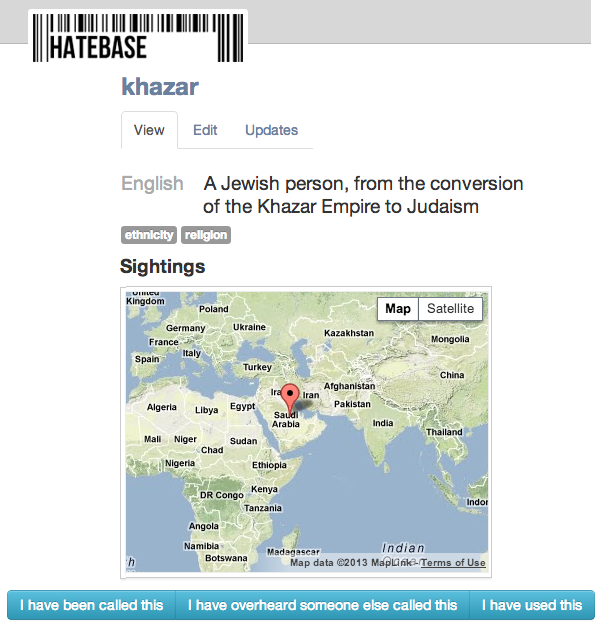Hatebase: An anti-genocide app
An NGO hopes tracking hateful tweets can flag mounting ethnic conflict, and even prevent genocide
Share
Timothy Quinn has found a use for hate.
He and his team have built a tool called Hatebase that scours the world’s tweets for hate speech. Hatebase is an effort of The Sentinel Project for Genocide Projection, a Toronto-based NGO. It indexes real-time utterances of all known epithets and their places of origin. If hateful tweets are geo-tagged, Hatebase can pinpoint a surge in racism to its origin, getting as “granular” as a six-block radius.
Hate speech, Quinn says, is one of the main precursors to violence and mass atrocity. By constantly monitoring the world’s social media chatter, Hatebase aims to build an early warning system for ethnic conflict, even genocide. He brings up the Rwandan Genocide, immediately before which the term “inyenzi”, meaning “cockroach”, was widely used on the radio in the ’90s in an effort to dehumanize Tutsis by Hutus. “Inyenzi” reached peak usage right before the mass killings began.
If it happened again today, the word would probably spike on social media too, giving NGOs and the international community an opportunity to intervene and prevent atrocities. “I’ll know it’s a success,” says Quinn, “when we have Amnesty International, Red Cross, Ushahidi and USAid pulling our data.” By offering its data free through an API, other organizations can plug Hatebase in to their own systems. Quinn sees the tool not as a sole predictor of conflict, but as a powerful data point that can be layered in with other information to paint a detailed picture of trouble brewing around the world.
I ask Quinn what might actually happen when something pops on Hatebase–say, a sharp rise in racist invective between two ethnic groups. He brings up the recent clashes between the Orma and and Pokomo tribes of Kenya. Rumours and misinformation have been spread, in large part via SMS messages, about stashes of weapons, theft, rape and violence. Periodic killings follow. If Hatebase noticed the spike in language, it could alert local government and NGOs, who could launch a PR campaign to dispel the inflammatory information, or find alternate means of resolving legitimate complaints. Of course, Kenyans use private SMS a lot more frequently than they use Twitter, so this example remains hypothetical for now.
Another hurdle for Hatebase is the fluidity and specificity of hate speech. New terms emerge daily and context is everything. To account for this, Hatebase encourages users to add to its ever-growing library of hyper-regionalized slurs. You can also report an instance of hate speech you’ve received, overheard or used yourself.
Quinn, who volunteers for Hatebase while away from his computer programming day job, says that the project’s goal is to expand from Twitter and crawl all social media platforms. The challenge will always be in massaging their algorithm to be context-aware, knowing the slight but vast difference between, for example, “my nigga” and “you niggers.”
“Hate is not about vocabulary,” Quinn tells me, “it’s about intent.”
Follow Jesse on Twitter @JesseBrown
